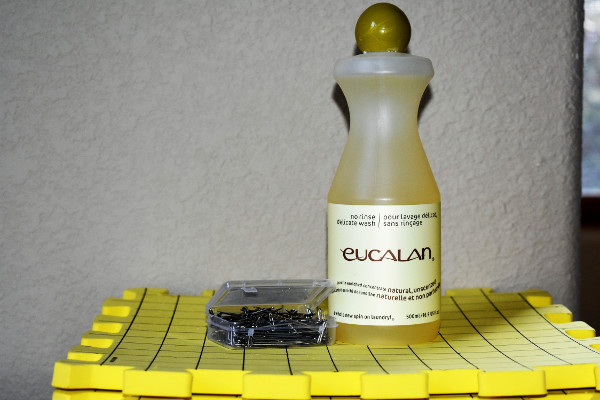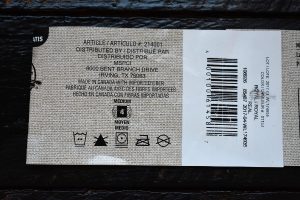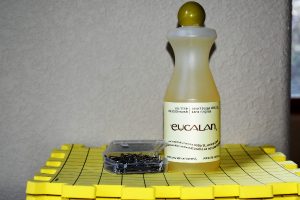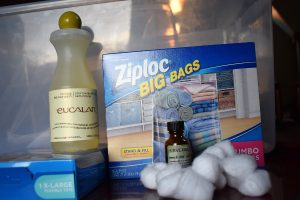
Crocheting a handmade gift takes time. Not only time, but it takes money. You spend a decent amount of both picking out and purchasing the perfect yarn for your next project – whether it’s a grandchild’s baby blanket, a lovely sweater for your mother or a cozy pair of socks for your sick friend. After
Crocheting a handmade gift takes time. Not only time, but it takes money. You spend a decent amount of both picking out and purchasing the perfect yarn for your next project – whether it’s a grandchild’s baby blanket, a lovely sweater for your mother or a cozy pair of socks for your sick friend. After spending countless hours working on your new masterpiece, you realize that even after the final stitch is completed, your work is far from finished. You now need to make sure your hot-off-your-hook items are in the best position possible for a long beautiful life. But what’s the correct way to store and care for your handmade items?
Fear not! Caring for your handmade items doesn’t have to be stressful. Use these four simple tips as a guide to help your crochet last for a lifetime: Block, Dry, Store and Protect.
Step 1: Block and Dry
First thing’s first – blocking. And for most of us the grumbling begins, but I promise, blocking is super important for the longevity of your knitted and crocheted items, yet many of us disregard it. So, why is blocking so important? First, it gently cleanses your garment after you’ve completed it (I mean, it’s been on road trips, to the local coffeehouse, to church, etc.). Secondly, it helps to open the fibers and define your stitches (particularly for knitted items worked in pieces, blocking will assist in preventing the edges from rolling while seaming). And lastly, blocking is an important step to storing your knit and crocheted creations. So don’t skip blocking, this small step will do wonders for the life of your knitted/crocheted item.
If you’ve never blocked an item before, the first step is to consult the yarn label for the yarn your project used. This will give you information regarding whether the yarn can withstand heat or whether it prefers cold water, and ultimately, how you should care for the piece. The label will also tell you if the yarn is machine washable or not. There’s a wealth of information offered on labels. If you’ve lost the label, you can generally find this information on the yarn manufacturer’s website.

The use of water when blocking is called Wet Blocking. In order to wet block an item, you will need some tepid water (water that is neither hot nor cold), a large bowl or bucket, a gentle cleanser (such as Eucalan or Soak), blocking mats and blocking pins.

Once you have completed your knitted or crocheted item, simple soak them in water with a bit of gentle cleanser for a moment or two, take the item out of the water gently (do not wring) and place it into a towel. Fold the towel with the garment lying flat inside and press on the towel in order to squeeze the water from the garment. The last step is to shape (pin) the garment to your blocking boards and allow it to completely dry. And that’s it! While it might seem tedious, taking the time to block your pieces will make your final product live a longer, happier life!
Step 2: Store and Protect
A large portion of the knitters/crocheter’s work is seasonal, meaning you’ll likely want to store it during the off season. And, you’ll want to store it in a way which would prevent creepy crawlers like moths and insects from sneaking their way in. Dirt particles on your knitted/crocheted items are also bad news and actually help to attract bugs! But all of these atrocities can be avoided with the proper storage techniques. To begin, you must ensure that each item is clean before you store it. Did you know that moths use protein in fibers as a food source and are particularly attracted to dirty and/or sweaty smelling fibers? Cleaning sound like something you could skip, but it’s essential to keeping your crochet and knit pieces safe while in storage. To clean your pieces, you can start by putting them through the gentle cycle in your washing machine (as long as your yarn label permits this method. Not all fibers are able to be machined washed). If this is not an option, you can also hand wash your projects using the same steps in the blocking section. But this time, instead of pinning the item to a board, you’d just lay it out flat and allow it to dry.
Once your item is washed and completely dry, you are ready to fold it and tuck them safely away. Some of the best storage options are air tight tubs or even giant Ziplock bags. Keeping your item safe from air exposure will minimize the risk for mold. As a side note: tubs and giant Ziplock bags also work great for yarn storage if you need a safe place to store your yarn collection while it’s not in use.
Before you put the lid on your tub or seal your plastic bag, a great way to repel insects and moths is to use herbs such as lavender, cedar or rosemary. To accomplish this, you can either place a sprig or two of the whole herb in your plastic tub or bag before closing, or you can throw in a few cotton balls soaked in essential oils along with your pieces—just make sure they also sealed in separate little bags so the oils don’t leak onto your projects. Make sure to periodically check on the herbs to make sure they’re still potent— after all, if you aren’t able to smell them, then the bugs likely can’t either and won’t be repelled.
And, if you find yourself in the unfortunate position of meeting a moth face to face, feasting upon your stored projects, get rid of the moth and immediately place the item in the freezer for at least 48 hours. This will successfully kill any insect larvae and/or eggs that are within your projects. Once removed from the freezer, wash the items again before placing them back into your wardrobe rotation.

So, there you have it, a few more minutes of work and your crochet and knit pieces should last for generations and generations.
Do you have any storage tips to share? Tell us in the I Like Crochet Facebook group.



Would the hand wash Woolite or Zero work the same as well?
You leave the cleanser in? You don’t rinse it out?
Hi Elizabeth, Gentle cleansers like Eucalan don’t need to be rinsed. They’re designed to be a no-rinse solution, which we personally are a huge fan of. 🙂 Thanks for your comment!